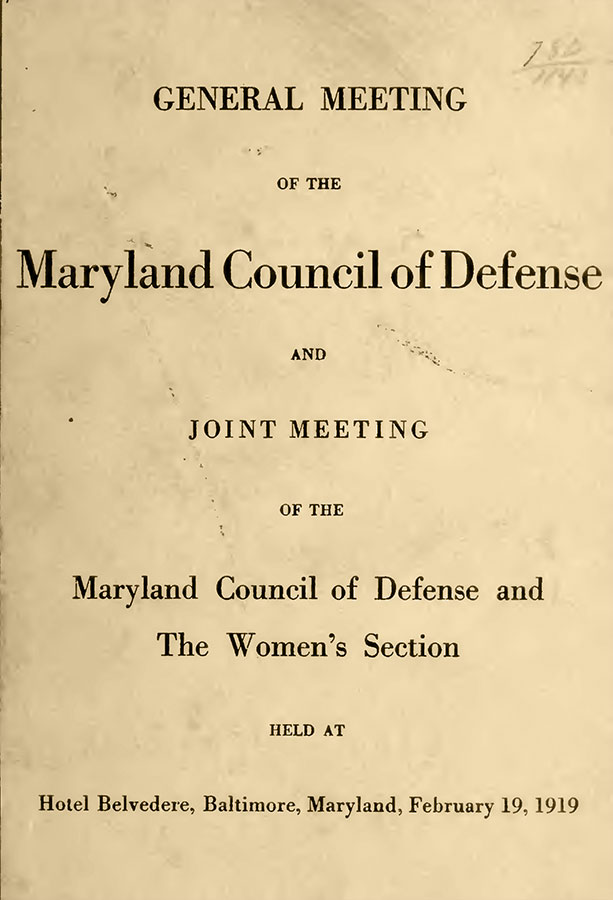Madeleine LeMoyne Ellicott
Suffragist, and founder and first president of the League of Women Voters of Maryland
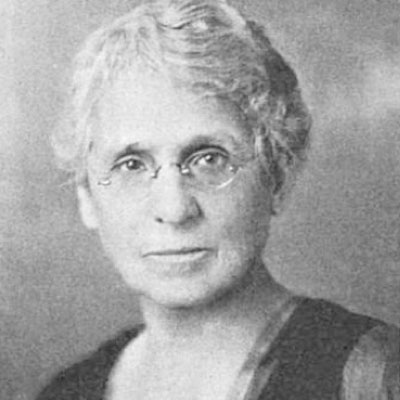
The Origins of the Ruscombe Mansion
The original owner of what we call today the Ruscombe Mansion Community Health Center was Madeleine LeMoyne Ellicott (b.1856). Our lovely Mansion building was her home from 1903 until her death in 1945. Madeleine LeMoyne Ellicott had an impressive career as a suffragist and was so consistently active in her local communities that they called her “the first woman citizen of Maryland” in her Baltimore Sun obituary. She is best known for her activities as the founder and first president of the League of Women Voters of Maryland.
In 1890, Madeleine married Charles Ellis Ellicott, and she is often referred to as Mrs. Charles E. Ellicott in records and documentation. Mrs. Ellicott was a prominent civic leader in many fields, not just the fight for women’s right to vote. In 1915 she was president of the Equal Suffrage League of Maryland, and as president she traveled representing Maryland across the country in the fight for the ratification of the 19th Amendment. She worked alongside a number of other prominent women, including Carrie Chapman Catt, Emma Maddox Funck, Edith Houghton Hooker, and many more.
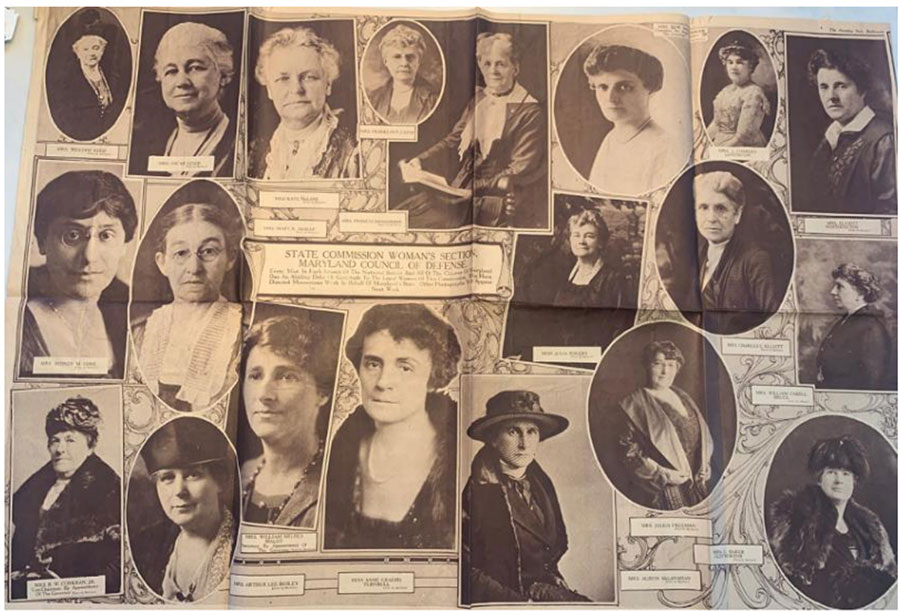
A collage of prominent women activists, including Madeleine (located center-right). Scott, Savannah. “The Women’s Committee of the Council of National Defense in Maryland, 1917-1918.” Senior Honors Projects, Bridgewater College, 2023.
Madeleine LeMoyne Ellicott’s generosity extended to other areas of life as well. A description of her from the records of the League of Women Voters of Maryland describes her positive impact on school-aged children in preventing juvenile delinquency. She helped found and served as President of the Children’s Playground Association of Baltimore, an organization that later turned into the Department of Recreation. She also helped to establish the Montrose School for Girls, specifically serving with the Maryland Industrial Training School for Girls. An early advocate for the establishment of a Juvenile Court and the appointment of policewomen, she would often sit in court with young girls and women caught up in the justice system to give moral support and to monitor their interrogation. As a young woman, Madeleine LeMoyne became associated with a group which included Dr. Mary Sherwood, the first woman doctor to be connected with the Johns Hopkins Hospital; Dr. Lillian Welch of Goucher College; and Mrs. Francie King Carey, a leader in social reforms in the city. With them she studied and tried to improve factory provisions for women and child laborers.
Maryland. Council Of Defense. (1919) General meeting of the Maryland Council of defense and joint meeting of the Maryland Council of defense and the Women’s section held at hotel Belvedere, Baltimore. [Pdf] Retrieved from the Library of Congress, https://www.loc.gov/item/20003530/.
The lands surrounding the Ruscombe Mansion Community Health Center were originally part of the James Woods Tyson estate, who named his own home “Ruscombe” in the 1860s. In 1887 a portion of his estate was sold to Madeleine LeMoyne’s brother, Francis J. LeMoyne. The name “Ruscombe Mansion” can be confusing since the original James Woods Tyson mansion has recently been restored and is located just down the street at 4901 Springarden Avenue, today known as the Stone Mansion.
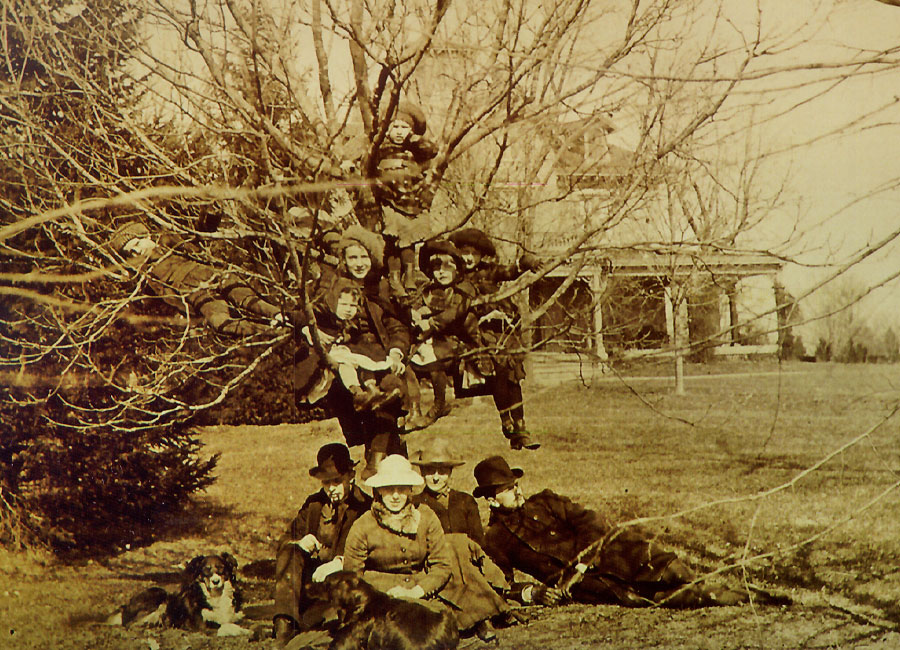
James Woods Tyson estate
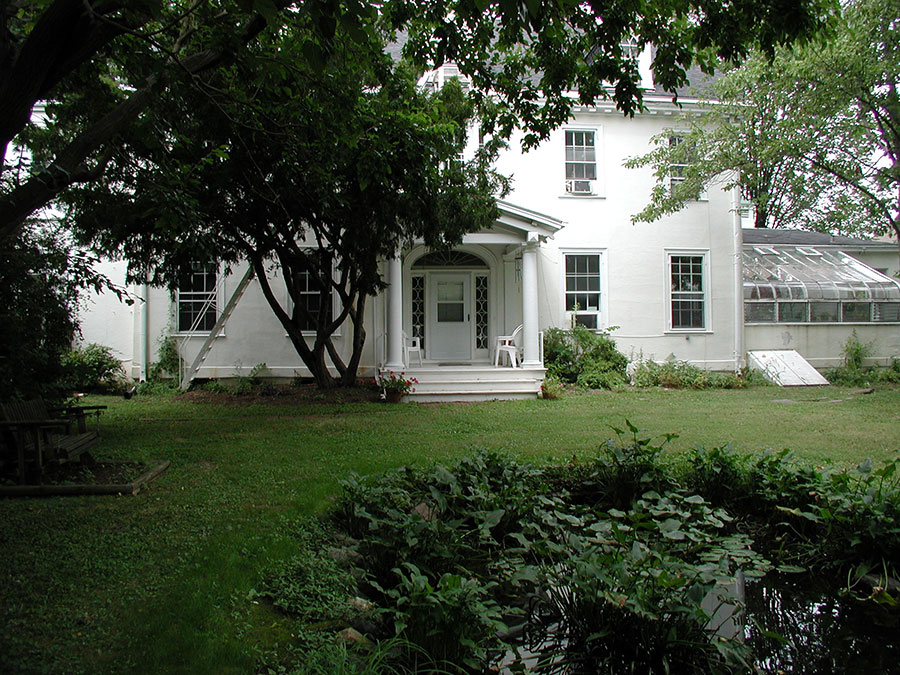
The Ruscombe Mansion Community Health Center is located on what was once 2405 Ruscombe Lane, and what is now 4801 Yellowwood Avenue. In 1903, after the lands had passed into the Lemoyne-Ellicott family, the architectural firm Ellicott and Emmart built the mansion. Ellicott and Emmart was a prominent architectural firm in the Baltimore area, made up of William W. Emmart and William M. Ellicott, who was brother to Charles E. Ellicott, meaning he was Madeleine’s brother-in-law. Ellicott and Emmart designed other notable buildings in Baltimore like St. David’s Church, Charlestown Retirement Home in Catonsville, the MedChi building on Cathedral Street, and a number of homes in Roland Park.
As a final tie back to our current Ruscombe healing community, as she was growing up in Chicago, Madeleine Lemoyne wanted to be a doctor, but was prevented from applying to medical school because of her gender. Instead, she left for Switzerland, studied chemistry, and returned to put her education and her privilege to work in reforming the community. She found a new way to enable women to thrive because she recognized that empowering women was healing for the entire community – just as at the Ruscombe Community Center, where we believe in inclusivity, and know that all people thrive when the community thrives. There are many similarities between the founder of the Ruscombe Mansion Community Health Center, Zohara Meyerhoff Hieronimus, and Madeleine Lemoyne Ellicott. Both had an unconventional interest in medicine, and both have lived lives of service focusing their philanthropic efforts on improving the community through social justice and sustainability.
Editor’s note: This article was written mainly by a Ruscombe intern from Goucher College named Madelyn Brown. Substantial research done by volunteer Camille Henley, a Goucher grad and history major, and original documentation started by Rehanna Nichols, another Goucher intern. Edited by Laura Cortner, Director of the Ruscombe Community, and another Goucher grad.
